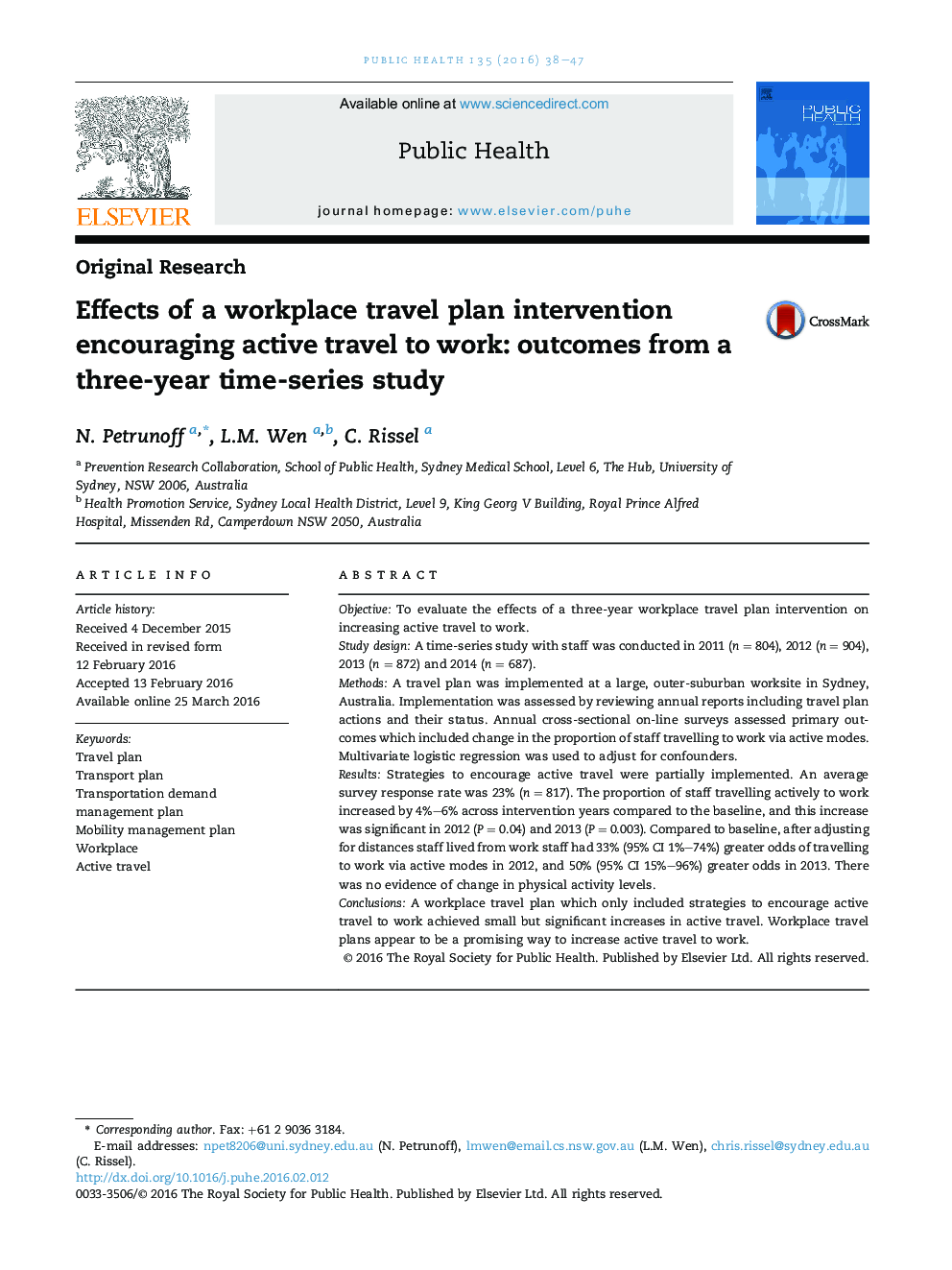| Article ID | Journal | Published Year | Pages | File Type |
|---|---|---|---|---|
| 1087283 | Public Health | 2016 | 10 Pages |
•The three-year travel plan encouraging active travel was effective.•It achieved a 4–6% increase in active travel to work across three years.•Travel plans show promise for increasing active travel to medium-large work sites.•Stronger study designs are required to confirm the effect of workplace travel plans.
ObjectiveTo evaluate the effects of a three-year workplace travel plan intervention on increasing active travel to work.Study designA time-series study with staff was conducted in 2011 (n = 804), 2012 (n = 904), 2013 (n = 872) and 2014 (n = 687).MethodsA travel plan was implemented at a large, outer-suburban worksite in Sydney, Australia. Implementation was assessed by reviewing annual reports including travel plan actions and their status. Annual cross-sectional on-line surveys assessed primary outcomes which included change in the proportion of staff travelling to work via active modes. Multivariate logistic regression was used to adjust for confounders.ResultsStrategies to encourage active travel were partially implemented. An average survey response rate was 23% (n = 817). The proportion of staff travelling actively to work increased by 4%–6% across intervention years compared to the baseline, and this increase was significant in 2012 (P = 0.04) and 2013 (P = 0.003). Compared to baseline, after adjusting for distances staff lived from work staff had 33% (95% CI 1%–74%) greater odds of travelling to work via active modes in 2012, and 50% (95% CI 15%–96%) greater odds in 2013. There was no evidence of change in physical activity levels.ConclusionsA workplace travel plan which only included strategies to encourage active travel to work achieved small but significant increases in active travel. Workplace travel plans appear to be a promising way to increase active travel to work.
